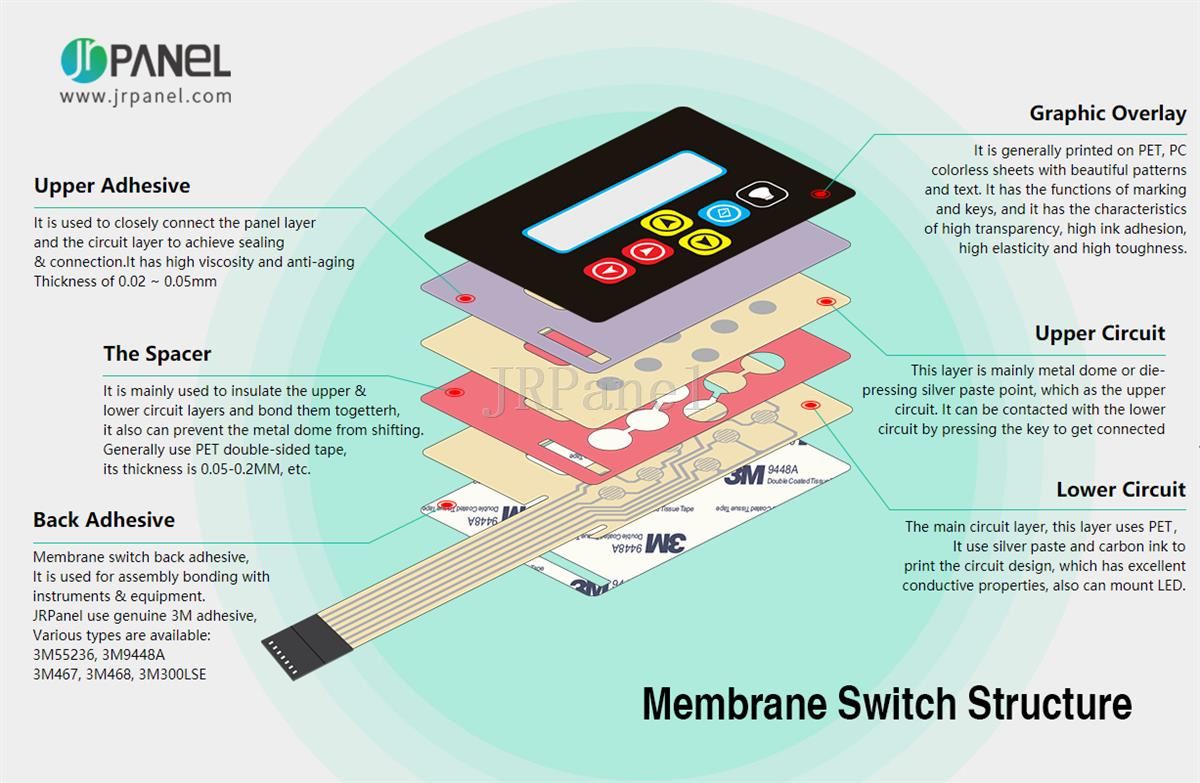Discover Different Types of Membrane Switch Technologies for Your Requirements
Discover Different Types of Membrane Switch Technologies for Your Requirements
Blog Article
Understanding the Capability of Membrane Layer Changes for Interface Tools
The capability of membrane switches over represents a significant development in user interface style, incorporating efficiency with aesthetic versatility. As markets significantly prioritize individual experience, recognizing the nuances of membrane switch innovation comes to be important.
What Are Membrane Switches?
Membrane layer switches are ingenious interface devices that help with customer communication with electronic devices. These functional parts are composed of multiple layers, consisting of a graphic overlay, spacer, and a published circuit layer. The layout enables a seamless combination into different electronic gadgets, improving both the aesthetic and practical aspects of individual interfaces.
Membrane layer switches are commonly used in a variety of applications, from family devices to commercial machinery and medical devices. Their construction generally includes a slim profile, making them an optimal option for portable styles. The responsive feedback provided by these switches can be engineered to satisfy particular user preferences, guaranteeing effective interaction in between the individual and the device.
Toughness is another significant benefit of membrane buttons, as they are resistant to dust, moisture, and chemicals, which enhances their life expectancy popular atmospheres. Furthermore, these switches can be customized in regards to shape, size, and graphic design, permitting branding and user-specific attributes. In general, membrane switches over represent a practical remedy for improving individual experience in electronic devices, incorporating performance with visual appeal in an efficient way.
How Membrane Switches Over Work
Operating on a straightforward concept, membrane changes utilize a split building to sign up user input efficiently. Each button is composed of multiple layers, consisting of a published circuit layer, a spacer layer, and a leading graphic layer, which are created to collaborate flawlessly. When an individual presses the top layer, it presses the spacer layer, bringing the conductive aspects of the circuit layer right into call with each other.
This call produces a shut circuit, indicating the gadget to implement a certain feature. The design permits various arrangements, consisting of tactile feedback, which can enhance the customer experience by supplying a physical experience upon activation. The materials made use of in membrane buttons frequently include adaptable substratums, such as polyester or polycarbonate, which ensure resilience and strength versus wear and tear.

Trick Benefits of Membrane Switches

One more considerable advantage is their compactness. Membrane buttons are slim and lightweight, which enables makers to save room in their gadgets without sacrificing capability. This function is specifically advantageous in applications where weight and volume are critical factors to consider.
In addition, membrane switches are immune to dirt, moisture, and chemicals, enhancing their resilience. This resilience extends their lifespan and decreases the requirement for regular substitutes, resulting in cost savings gradually.
Moreover, the tactile responses given by membrane buttons can be enhanced to enhance individual communication. They can include attributes visit this page such as increased buttons or distinct clicks, enhancing use and customer experience.
Applications Throughout Industries
Interface devices using membrane switches are widespread in a vast array of industries, showcasing their versatility and capability. Membrane Switch. In the medical industry, membrane switches are integral to gadgets such as analysis tools and patient surveillance systems, where their toughness Visit Your URL and ease of cleaning are critical for maintaining hygiene standards. In the automotive industry, these switches are used in dashboard controls and infomercial systems, providing a sleek and modern-day interface for users.
Additionally, the consumer electronic devices market benefits from membrane switches in appliances and handheld devices, where compact style and user-friendly interfaces boost user experience. Industrial applications additionally utilize membrane layer switches over for control panels in machinery and automation systems, highlighting their robustness and resistance to rough atmospheres.
In the aerospace and protection sectors, membrane layer buttons are made use of in cabin controls and tools, where dependability and efficiency under extreme conditions are critical. In addition, the gaming sector increasingly integrates membrane layer buttons in controllers and game equipments, contributing to an appealing user experience. In general, the flexibility of membrane switches over enables their prevalent use throughout numerous markets, emphasizing their relevance in modern interface design.
Future Trends in Membrane Layer Switch Technology

In addition, the usage of advanced products, such as polycarbonate and polyester films, is expected to climb, giving enhanced durability and resistance to environmental stress factors. These products contribute to the overall longevity of membrane layer buttons, making them suitable for harsher commercial applications.
In addition, the consolidation of wise innovation, including IoT connectivity, will certainly allow membrane layer switches to connect with other tools and systems, facilitating a more interactive individual experience. This trend aligns with the growing demand for clever tools across numerous markets, from medical care to consumer electronics.
Finally, modification choices are expected to increase, enabling makers to produce bespoke services tailored to details user needs and preferences. These developments will certainly position membrane switches as necessary parts in the development of interface modern technology.
Final Thought
To conclude, membrane layer switches stand for a critical advancement in individual interface modern technology, supplying a trustworthy and versatile service for diverse digital applications. Their split construction facilitates portable style, while attributes such as responsive responses boost user interaction. The toughness versus ecological variables even more strengthens their utility across numerous sectors. As innovations in material science and touch sensing modern technologies continue, the functionality and applicability of membrane layer switches are anticipated to expand, strengthening their value in modern-day electronic tools.
Report this page